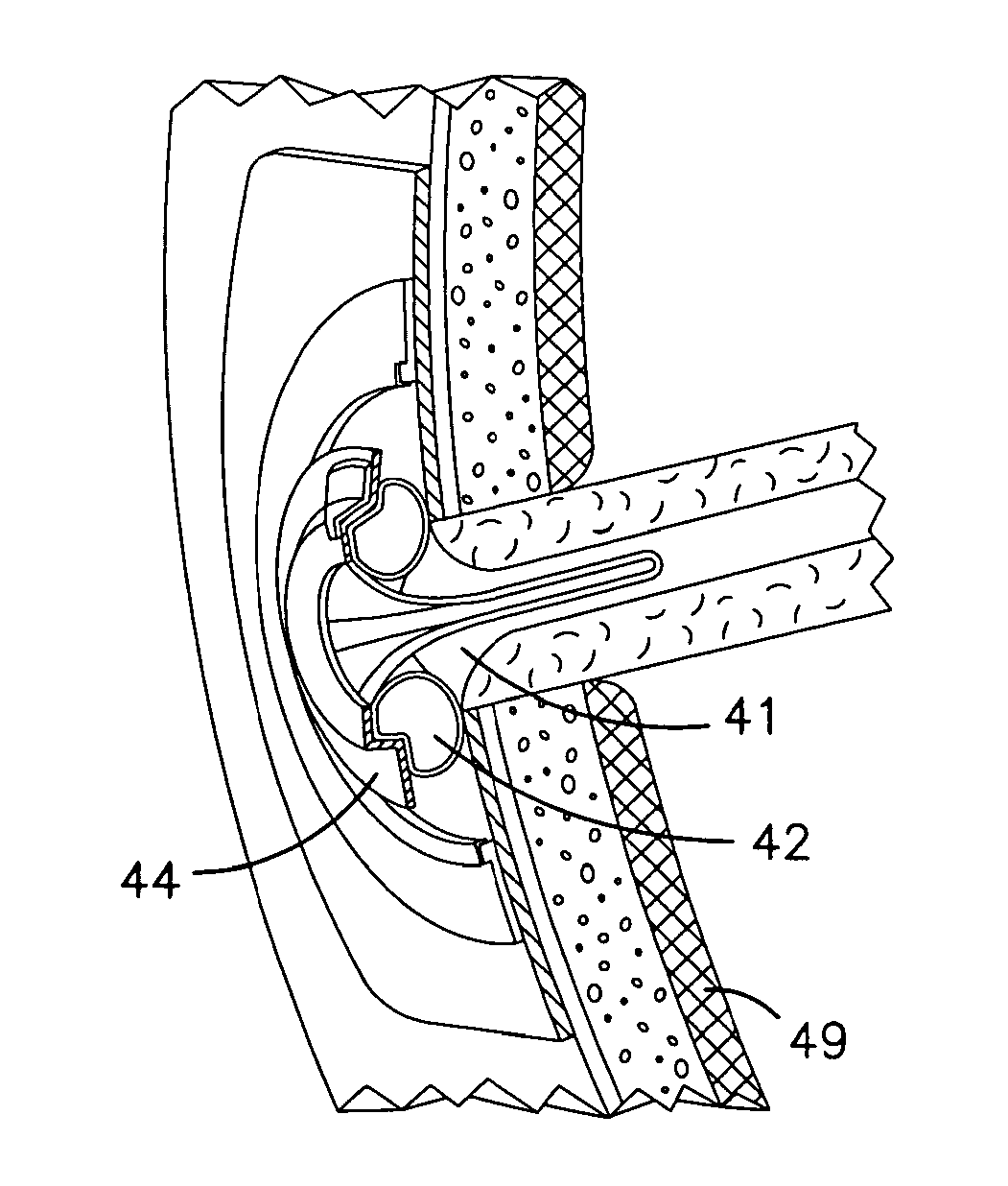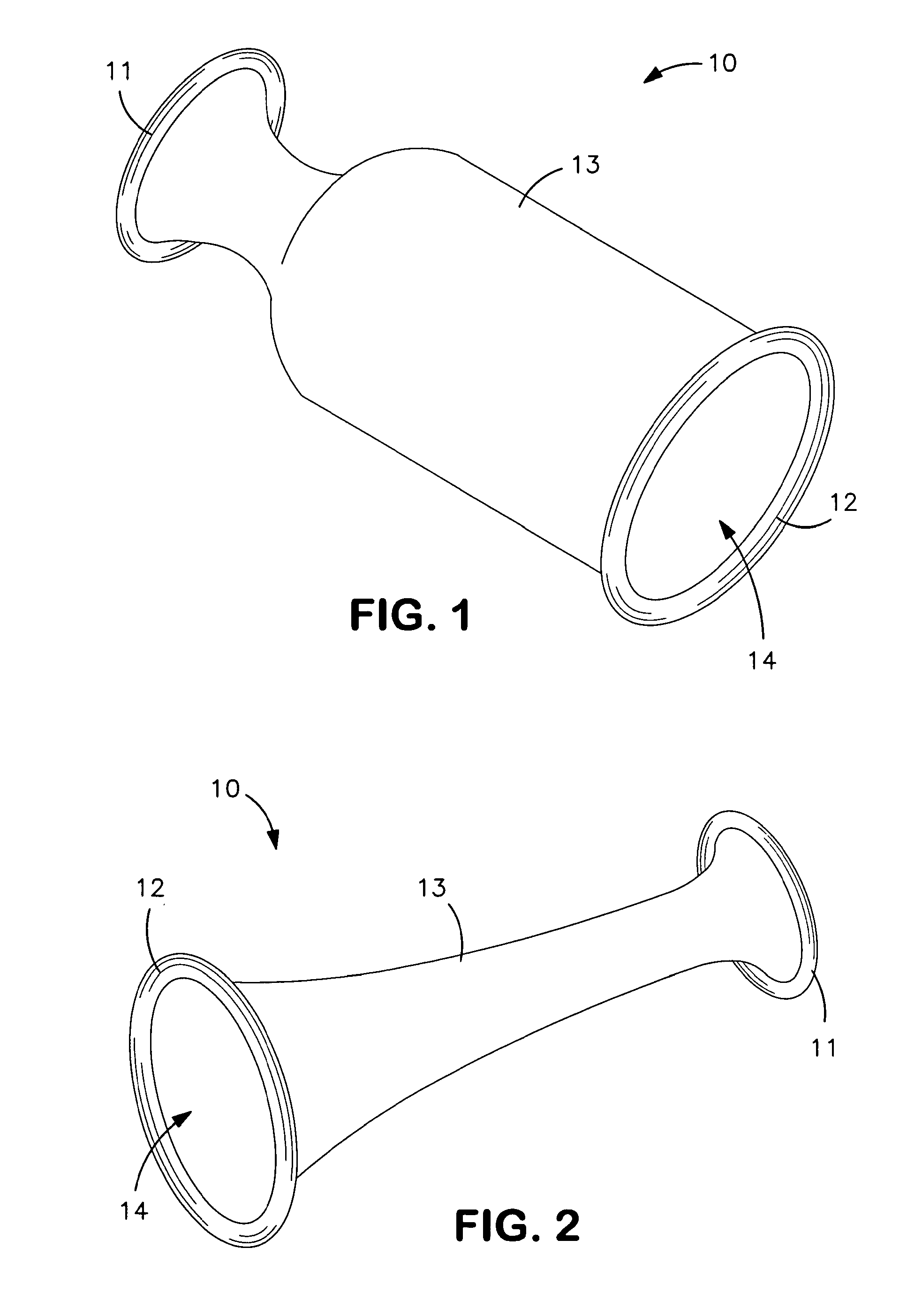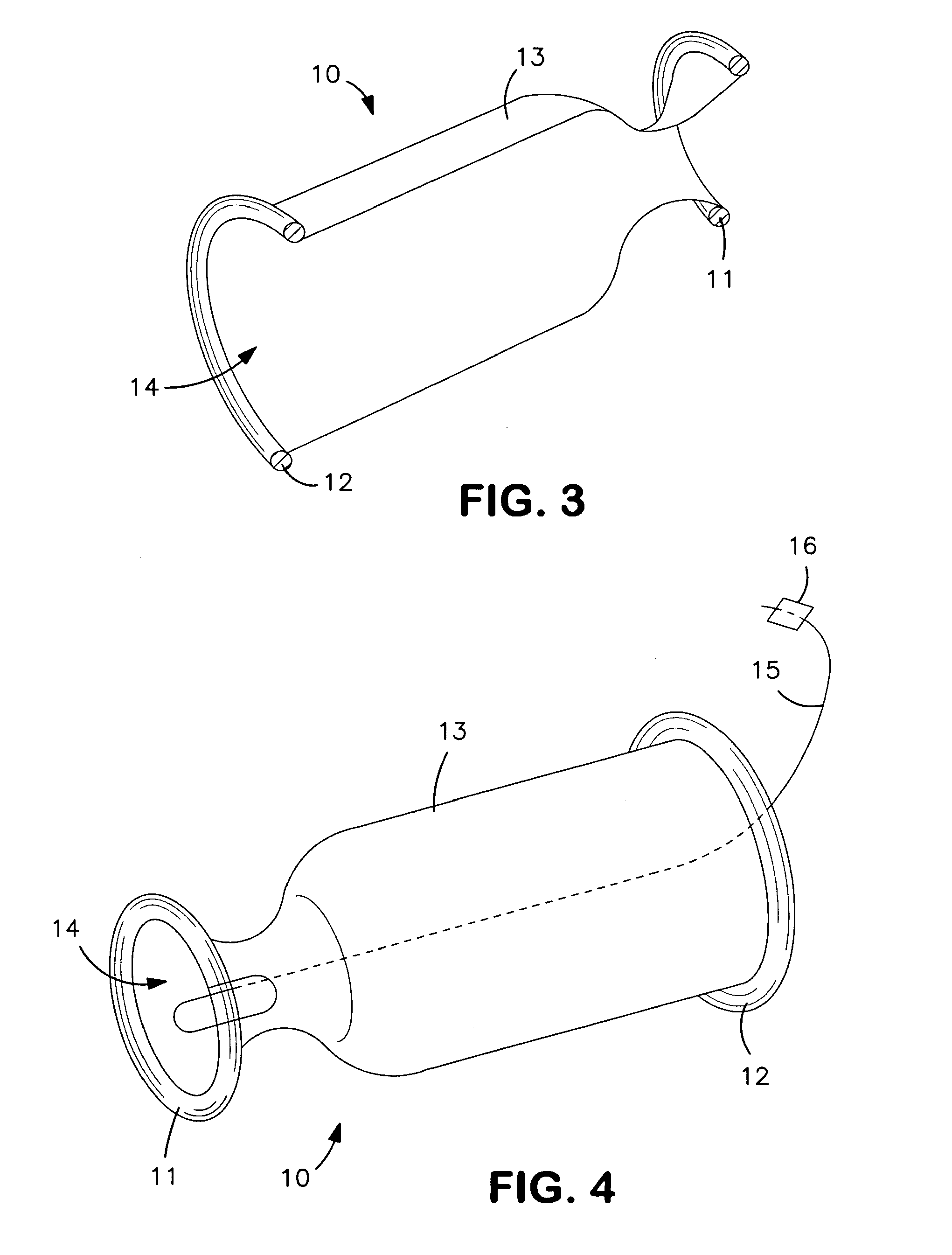Ostomy appliances for effluent control
a technology for effluent control and ostomy, which is applied in the field of ostomy appliances for effluent control, can solve the problems of weight gain, difficult management of flushing and recessed stomas, and inability to properly form stomas, etc., and achieves the effects of convenient insertion, convenient insertion, and sufficient tim
- Summary
- Abstract
- Description
- Claims
- Application Information
AI Technical Summary
Benefits of technology
Problems solved by technology
Method used
Image
Examples
first embodiment
[0060]In another embodiment the shape of the elastic covering 21, which forms the central channel 14 may also be of a tubular tapered shape attached to an external O-ring 12 as in the first embodiment above (FIGS. 1, 3 and 4).
[0061]Still another embodiment may have the supporting ringed feature 19 extend in a tubular straight shape through the stoma passageway and out of the body.
[0062]The means of inserting the ostomy appliance 10 into the stoma may involve the use of a tubular shaped insertion tool (not shown). The tool is placed through the central channel 14 from the proximal end of the ostomy appliance 10, passes through the ringed feature 19, and the tool end engages the curved ends of the protrusions 17 when they are bent together into a cylindrical shape. The tool may be held in place by adhesive and / or engaging features at the tool end. The protrusions 17 may also possess adhesive and / or engaging features. The tool may also be held in place via a feature that maintains a fi...
fourth embodiment
[0065]In the ostomy appliance 10, referring to FIG. 6, an ostomy appliance 10 may include a seal for sealing around a stoma such that the seal comprising the internal portion for sealing against the internal wall of the stoma lumen consists of an expandable foam material 22. This foam material 22 covers the exterior of a more rigid central support 23 that is of a generally tubular shape, but having a semi-spherical bulge 24 at the distal end and flange-like feature 25 at the proximal end. The foam material 22 may have varying thicknesses over different portions of the central support 23, e.g., it may be thicker over the semi-spherical bulge 24. The foam material 22 expands significantly in the presence of moisture. Over the exterior of the foam material 22 may be a coating or covering of very thin, elastic sealing film 27. The flange-like feature 25 remains exterior to the body when the ostomy appliance 10 is in place so as to be clear of the stoma, and may attach to the skin, an ex...
fifth embodiment
[0069]The inflated chamber portion 28 of the ostomy appliance 10 is inserted fully behind the fascia. The proximal end of the ostomy appliance 10, which includes a portion of the elastic tubular member 31 and the attached O-ring 12, remains external to the stoma. The dual interconnecting chambers 29 are then inflated via an inflation tube 32 that has a check valve, and an inflation device such as a syringe. Once inflated, as with previous embodiments, the external O-ring 12 is then grasped and gently tugged outward to seat the most proximal of the dual interconnecting chambers 29 against the fascia. The external O-ring 12 is then manually rolled so as to adjust to the specific distance between the fascia and skin. The firmness of the external O-ring 12 acts to maintain the position of the rolled up length and the elastic rebound of the tubular member 31 provides an elastic range to accommodate body movement when the ostomy appliance 10 is worn. Also, as with previous embodiments, th...
PUM
 Login to View More
Login to View More Abstract
Description
Claims
Application Information
 Login to View More
Login to View More - R&D
- Intellectual Property
- Life Sciences
- Materials
- Tech Scout
- Unparalleled Data Quality
- Higher Quality Content
- 60% Fewer Hallucinations
Browse by: Latest US Patents, China's latest patents, Technical Efficacy Thesaurus, Application Domain, Technology Topic, Popular Technical Reports.
© 2025 PatSnap. All rights reserved.Legal|Privacy policy|Modern Slavery Act Transparency Statement|Sitemap|About US| Contact US: help@patsnap.com



